- All categories
- Integrated Circuits (ICs)
- Development Boards, Kits, Programmers
- Discrete Semiconductor Products
- Power Supplies - Board Mount
- RF and Wireless
- Sensors, Transducers
- Memory Cards, Modules
- Audio Products
- Circuit Protection
- Crystals, Oscillators, Resonators
- Filters
- Isolators
- Kits
- Maker/DIY, Educational
- Optoelectronics
- Power Supplies - External/Internal (Off-Board)
- Relays
- Resistors
- Test and Measurement
- Uncategorized
- Inductors, Coils, Chokes
- Motors, Actuators, Solenoids and Drivers
- Switches
- Embedded Computers
- Capacitors
- Transformers
- Battery Products
- Products
- All categories
-
Integrated Circuits (ICs)
-
Embedded
- FPGAs (Field Programmable Gate Array)
- Microcontrollers
- CPLDs (Complex Programmable Logic Devices)
- FPGAs (Field Programmable Gate Array) with Microcontrollers
- PLDs (Programmable Logic Device)
- Microcontrollers, Microprocessor, FPGA Modules
- System On Chip (SoC)
- Application Specific Microcontrollers
- DSP (Digital Signal Processors)
- Microprocessors
-
Interface
- Drivers, Receivers, Transceivers
- Sensor and Detector Interfaces
- Analog Switches - Special Purpose
- Analog Switches, Multiplexers, Demultiplexers
- CODECS
- Controllers Interface ICs
- Direct Digital Synthesis (DDS)
- Encoders, Decoders, Converters
- Filters - Active
- I/O Expanders
- Modems - ICs and Modules
- Modules
- Sensor, Capacitive Touch
- Signal Buffers, Repeaters, Splitters
- Signal Terminators
- Specialized
- Telecom
- Serializers, Deserializers
- UARTs (Universal Asynchronous Receiver Transmitter)
- Voice Record and Playback
- Memory
-
Power Management (PMIC)
- DC DC Switching Controllers
- Display Drivers
- Full Half-Bridge Drivers
- Gate Drivers
- LED Drivers
- Motor Drivers, Controllers
- Power Distribution Switches, Load Drivers
- Power Management - Specialized
- Power Supply Controllers, Monitors
- Special Purpose Regulators
- Supervisors
- Voltage Regulators - DC DC Switching Regulators
- Voltage Regulators - Linear
- Voltage Regulators - Linear + Switching
- AC DC Converters, Offline Switches
- Battery Chargers
- Battery Management
- Current Regulation/Management
- Energy Metering
- Hot Swap Controllers
- Laser Drivers
- Lighting, Ballast Controllers
- OR Controllers, Ideal Diodes
- PFC (Power Factor Correction)
- Power Over Ethernet (PoE) Controllers
- RMS to DC Converters
- Thermal Management
- Voltage Reference
- Voltage Regulators - Linear Regulator Controllers
- V/F and F/V Converters
- Specialized ICs
- Audio Special Purpose
- Clock/Timing
- Data Acquisition
- Linear
-
Logic
- Buffers, Drivers, Receivers, Transceivers
- Comparators
- FIFOs Memory
- Flip Flops
- Gates and Inverters
- Gates and Inverters - Multi-Function, Configurable
- Multivibrators
- Shift Registers
- Signal Switches, Multiplexers, Decoders
- Translators, Level Shifters
- Latches
- Specialty Logic
- Counters, Dividers
- Parity Generators and Checkers
- Universal Bus Functions
-
Embedded
-
Development Boards, Kits, Programmers
- Accessories
- Evaluation and Demonstration Boards and Kits
- Evaluation Boards - DC/DC & AC/DC (Off-Line) SMPS
- Evaluation Boards - Expansion Boards, Daughter Cards
- Evaluation Boards - LED Drivers
- Evaluation Boards - Sensors
- Evaluation Boards - Embedded - Complex Logic (FPGA, CPLD)
- Evaluation Boards - Embedded - MCU, DSP
- Programmers, Emulators, and Debuggers
- Software, Services
- Evaluation Boards - Analog to Digital Converters (ADCs)
- Evaluation Boards - Audio Amplifiers
- Evaluation Boards - Digital to Analog Converters (DACs)
- Evaluation Boards - Linear Voltage Regulators
- Evaluation Boards - Op Amps
- Programming Adapters, Sockets
- RF Evaluation and Development Kits, Boards
- RFID Evaluation and Development Kits, Boards
-
Discrete Semiconductor Products
- Power Supplies - Board Mount
-
RF and Wireless
- RF Amplifiers
- Attenuators
- RF Accessories
- RF Demodulators
- RF Detectors
- RF Front End (LNA + PA)
- RF Misc ICs and Modules
- RF Mixers
- RF Modulators
- RF Power Controller ICs
- RF Power Dividers/Splitters
- RF Receivers
- RF Shields
- RF Switches
- RF Transceiver ICs
- RF Transceiver Modules and Modems
- RF Transmitters
- RFID, RF Access, Monitoring ICs
- RFID Transponders, Tags
- RF Multiplexers
- RF Receiver, Transmitter, and Transceiver Finished Units
- RF Antennas
- RFI and EMI - Contacts, Fingerstock and Gaskets
- RFID Reader Modules
- RF Circulators and Isolators
- RF Directional Coupler
- Balun
- Subscriber Identification Module (SIM) Cards
- RFID Accessories
- RFID Antennas
-
Sensors, Transducers
- Current Sensors
- Magnetic Sensors
- Position Sensors
- Specialized Sensors
- Temperature Sensors
- Motion Sensors
- Multifunction
-
Optical Sensors
- Ambient Light, IR, UV Sensors
- Image Sensors, Camera
- Photodiodes
- Distance Measuring
- Photointerrupters - Slot Type - Transistor Output
- Phototransistors
- Reflective - Analog Output
- Reflective - Logic Output
- Photo Detectors - Logic Output
- Photointerrupters - Slot Type - Logic Output
- Photoelectric, Industrial
- Camera Modules
- Photo Detectors - Remote Receiver
- Sensor, Transducer Accessories
- Sensor, Transducer Amplifiers
- Color Sensors
- Encoders
- Encoders - Industrial
- Touch Sensors
- Pressure Sensors, Transducers
- Flow Sensors
- Gas Sensors
- Pressure Sensors, Transducers - Industrial
- Float, Level Sensors
- Magnets
- Proximity Sensors
- Flow Sensors - Industrial
- Humidity, Moisture Sensors
- Memory Cards, Modules
- Audio Products
- Circuit Protection
- Crystals, Oscillators, Resonators
- Filters
- Isolators
- Kits
- Maker/DIY, Educational
-
Optoelectronics
- Circuit Board Indicators, Arrays, Light Bars, Bar Graphs
- Fiber Optic Transceiver Modules
- LED Character and Numeric
- COBs, Engines, Modules, Strips
- Color LED Lighting
- Display Bezels, Lenses
- Fiber Optic Receivers
- Fiber Optic Transmitters - Discrete
- Fiber Optic Transmitters - Drive Circuitry Integrated
- Laser Diodes, Modules
- LED Dot Matrix and Cluster
- LED Emitters - Infrared, UV, Visible
- LED Indication - Discrete
- Lenses
- Optoelectronics Accessories
- White LED Lighting
- Incandescent, Neon Lamps
- Fiber Optic Switches, Multiplexers, Demultiplexers
- Ballasts, Inverters
- LCD, OLED, Graphic
- LCD, OLED Character and Numeric
- Display, Monitor - LCD Driver/Controller
- Power Supplies - External/Internal (Off-Board)
- Relays
- Resistors
- Test and Measurement
- Uncategorized
- Inductors, Coils, Chokes
- Motors, Actuators, Solenoids and Drivers
- Switches
- Embedded Computers
- Capacitors
- Transformers
- Battery Products
- Manufacturers
- Services
- Industries
- Top-Quality Commitment
- Resources
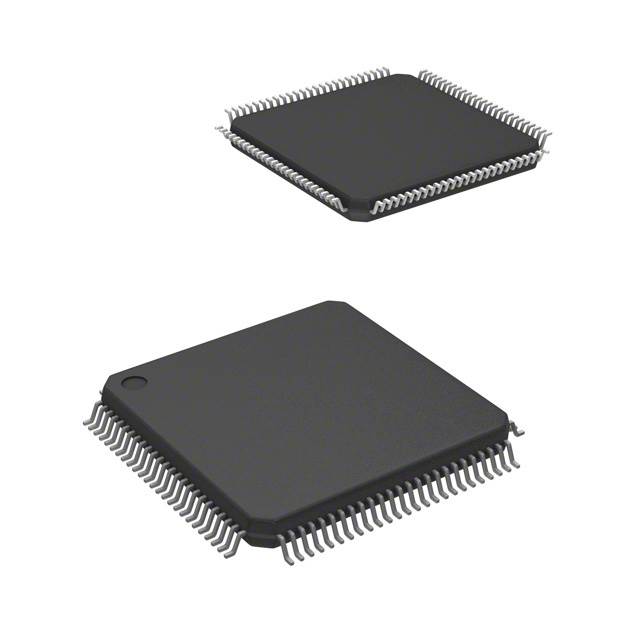
ATSAMG54N19B-AU datasheet
ATSAMG54N19B-AU pdf
ATSAMG54N19B-AU distributor
ATSAMG54N19B-AU manufacturer
ATSAMG54N19B-AU supplier
ATSAMG54N19B-AU price
ATSAMG54N19B-AU specification
ATSAMG54N19B-AU wholesale
ATSAMG54N19B-AU package
ATSAMG54N19B-AU Microchip Technology
ATSAMG54N19B-AU







$0.41
Price update:a months ago







Microchip Technology
Microchip Technology Inc., headquartered in Chandler, Arizona, leads in microcontrollers and analog semiconductors, facilitating diverse global applications with innovative solutions, low-risk development, and dependable quality assurance.
View All Product from Microchip TechnologyPopular Products
 DSC1102NI1-156.2500TMEMS OSC., LOW JITTER, 156.25MHZPrice negotiable Detail
DSC1102NI1-156.2500TMEMS OSC., LOW JITTER, 156.25MHZPrice negotiable Detail DSC1001DL2-022.5792TMEMS OSC XO 22.5792MHZ CMOS SMDPrice negotiable Detail
DSC1001DL2-022.5792TMEMS OSC XO 22.5792MHZ CMOS SMDPrice negotiable Detail SY100E167JC-TRIC MULTIPLEXER 6 X 2:1 28PLCCPrice negotiable Detail
SY100E167JC-TRIC MULTIPLEXER 6 X 2:1 28PLCCPrice negotiable Detail MIC281-5BM6-TRSENSOR DIGITAL REMOTE SOT23-6$1.06 Detail
MIC281-5BM6-TRSENSOR DIGITAL REMOTE SOT23-6$1.06 Detail JAN1N4622-1/TRVOLTAGE REGULATOR$3.33 Detail
JAN1N4622-1/TRVOLTAGE REGULATOR$3.33 Detail
 PIC32MX120F032DT-I/PTIC MCU 32BIT 32KB FLASH 44TQFP$1.38 Detail
PIC32MX120F032DT-I/PTIC MCU 32BIT 32KB FLASH 44TQFP$1.38 Detail PIC32MZ2048ECG064-I/PTIC MCU 32BIT 2MB FLASH 64TQFP$62.24 Detail
PIC32MZ2048ECG064-I/PTIC MCU 32BIT 2MB FLASH 64TQFP$62.24 Detail MCP4542-103E/MSIC DGTL POT 10KOHM 129TAP 8MSOP$0.90 Detail
MCP4542-103E/MSIC DGTL POT 10KOHM 129TAP 8MSOP$0.90 Detail DSPIC33EP64MC504T-I/PTIC MCU 16BIT 64KB FLASH 44TQFP$3.90 Detail
DSPIC33EP64MC504T-I/PTIC MCU 16BIT 64KB FLASH 44TQFP$3.90 Detail- MIC5207-2.5BM5-TRIC REG LINEAR 2.5V 180MA SOT23-5$0.38 Detail
 DSC1102NI1-156.2500TMEMS OSC., LOW JITTER, 156.25MHZPrice negotiable Detail
DSC1102NI1-156.2500TMEMS OSC., LOW JITTER, 156.25MHZPrice negotiable Detail DSC1001DL2-022.5792TMEMS OSC XO 22.5792MHZ CMOS SMDPrice negotiable Detail
DSC1001DL2-022.5792TMEMS OSC XO 22.5792MHZ CMOS SMDPrice negotiable Detail SY100E167JC-TRIC MULTIPLEXER 6 X 2:1 28PLCCPrice negotiable Detail
SY100E167JC-TRIC MULTIPLEXER 6 X 2:1 28PLCCPrice negotiable Detail MIC281-5BM6-TRSENSOR DIGITAL REMOTE SOT23-6$1.06 Detail
MIC281-5BM6-TRSENSOR DIGITAL REMOTE SOT23-6$1.06 Detail JAN1N4622-1/TRVOLTAGE REGULATOR$3.33 Detail
JAN1N4622-1/TRVOLTAGE REGULATOR$3.33 Detail
 PIC32MX120F032DT-I/PTIC MCU 32BIT 32KB FLASH 44TQFP$1.38 Detail
PIC32MX120F032DT-I/PTIC MCU 32BIT 32KB FLASH 44TQFP$1.38 Detail PIC32MZ2048ECG064-I/PTIC MCU 32BIT 2MB FLASH 64TQFP$62.24 Detail
PIC32MZ2048ECG064-I/PTIC MCU 32BIT 2MB FLASH 64TQFP$62.24 Detail MCP4542-103E/MSIC DGTL POT 10KOHM 129TAP 8MSOP$0.90 Detail
MCP4542-103E/MSIC DGTL POT 10KOHM 129TAP 8MSOP$0.90 Detail DSPIC33EP64MC504T-I/PTIC MCU 16BIT 64KB FLASH 44TQFP$3.90 Detail
DSPIC33EP64MC504T-I/PTIC MCU 16BIT 64KB FLASH 44TQFP$3.90 Detail- MIC5207-2.5BM5-TRIC REG LINEAR 2.5V 180MA SOT23-5$0.38 Detail
 DSC1102NI1-156.2500TMEMS OSC., LOW JITTER, 156.25MHZPrice negotiable Detail
DSC1102NI1-156.2500TMEMS OSC., LOW JITTER, 156.25MHZPrice negotiable Detail DSC1001DL2-022.5792TMEMS OSC XO 22.5792MHZ CMOS SMDPrice negotiable Detail
DSC1001DL2-022.5792TMEMS OSC XO 22.5792MHZ CMOS SMDPrice negotiable Detail SY100E167JC-TRIC MULTIPLEXER 6 X 2:1 28PLCCPrice negotiable Detail
SY100E167JC-TRIC MULTIPLEXER 6 X 2:1 28PLCCPrice negotiable Detail MIC281-5BM6-TRSENSOR DIGITAL REMOTE SOT23-6$1.06 Detail
MIC281-5BM6-TRSENSOR DIGITAL REMOTE SOT23-6$1.06 Detail JAN1N4622-1/TRVOLTAGE REGULATOR$3.33 Detail
JAN1N4622-1/TRVOLTAGE REGULATOR$3.33 Detail

The Microchip's SAM G54 embeds a Cortex-M4 CPU with an FPU (floating point unit) that ensures maximum throughput. This is very important as it allows you to minimize the active power consumption and get to sleep faster in order to reduce the overall power consumption. Additionally, the device has 16 DMA channels, which give extremely high throughput.
The combination of ultra-low power consumption, fast wake-up time and high throughput is what gives the SAM G the edge in space- and power-constrained consumer applications such as sensor hubs. It wakes up quickly, has the throughput needed to reduce the amount of time spent in active mode, and then goes back to sleep with SRAM retention to conserve energy.
This gives the best performance and longest battery lifetime. It is fully-functional all the way down to 1.7V; including flash reads and writes, as well as full ADC operation. This allows for a more flexible power supply scheme that will squeeze extra runtime out of a battery.
Supported by MPLAB X IDE and MPLAB Harmony.Feature
ARM Cortex-M4 with up to 96 Kbytes SRAM on I/D bus providing 0 wait state execution at up to 96 MHz
Memory Protection Unit (MPU)
DSP Instructions, Floating Point Unit (FPU), Thumb®-2 instruction set
512 Kbytes embedded Flash
96 Kbytes embedded SRAM
Embedded voltage regulator for single-supply operation
Power-on reset (POR) and Watchdog for safe operation
Quartz or ceramic resonator oscillators: 3 to 20 MHz with clock failure detection and 32.768 kHz for RTT or system clock
High-precision 8/16/24 MHz factory-trimmed internal RC oscillator. In-application trimming access for frequency adjustment
Slow clock internal RC oscillator as permanent low-power mode device clock
PLL range from 48 MHz to 120 MHz for device clock
PLL range from 24 MHz to 48 MHz for USB device and USB OHCI
Up to 30 peripheral DMA (PDC) channels
256-bit General-Purpose Backup Registers (GPBR)
16 external interrupt lines
102 μA/MHz running Fibonacci in SRAM(Active mode)
Wait mode down to 8 μA
Wake-up time less than 5 μs
49-lead WLCSP, 100-pin LQFP, 14 x 14 mm, pitch 0.5 mm
- Industrial (-40° C to +85° C)
One USART with SPI mode
2 Inter-IC Sound Controllers (I2S)
Two UARTs
Three Two-Wire Interface (TWI) modules featuring two TWI masters and one high-speed TWI slave
One fast SPI at up to 24Mbit/s
Two three-channel 16-bit Timer/Counters (TC) with Capture, Waveform, Compare and PWM modes
One 32-bit Real-Time Timer (RTT)
One 32-bit Real-Time Clock (RTC)
Up to 38 controllable I/O lines with external interrupt capability (edge or level sensitivity), debouncing, glitch filtering and on-die series resistor termination. Individually programmable open-drain, pull-up and pull-down resistor and synchronous output
Two PIO Controllers provide control of up to 25 I/O lines
Two-way one-channel Pulse Density Modulation (PDM) (interfaces up to two microphones in PDM mode)
- One 8-channel ADC, resolution up to 12 bits, sampling rate up to 800 kSps
Serial Wire/JTAG Debug Port(SWJ-DP)
Debug access to all memories and registers in the system, including Cortex-M4 register bank when the core is running, halted, or held in reset.
Serial Wire Debug Port (SW-DP) and Serial Wire JTAG Debug Port (SWJ-DP) debug access.
Flash Patch and Breakpoint (FPB) unit for implementing breakpoints and code patches.
Data Watchpoint and Trace (DWT) unit for implementing watchpoints, data tracing, and system profiling.
Instrumentation Trace Macrocell (ITM) for support of printf style debugging.
IEEE1149.1 JTAG Boundary-scan on all digital pins.
ASF-Atmel software Framework – SAM software development framework
Integrated in the Atmel Studio IDE with a graphical user interface or available as standalone for GCC, IAR compilers.
DMA support, Interrupt handlers Driver support
USB, TCP/IP, Wi-Fi and Bluetooth, Numerous USB classes, DHCP and Wi-Fi encryption Stacks
RTOS integration, FreeRTOS is a core component
Microcontroller Features
Core
- 1. Shipping starts at $40, but prices may vary for certain countries like South Africa, Brazil, India, Pakistan, Israel, etc.
- 2. The basic freight for packages ≤0.5kg or equivalent volume is influenced by the time zone and country.
- 1. Our products are currently shipped using DHL, SF, and UPS. For low quantities, FedEx is the chosen carrier.
- 1. Once shipped, the estimated delivery time is contingent on the selected shipping method.






SZC's logistic and inventory management programs bring you unmatched success.
Our strategic hubs located in Futian, Longgang, Nanshan offer a variety of customized programs designed for specific customers' needs.
We also have long-standing relationships with major logistics carriers and provide flexible solutions to meet your individual requirements.
1. Every electronic component you purchase from us comes with a 365-Day Warranty. We stand behind the quality of our products.
2. Should you receive any item that isn't in perfect condition, we are committed to arranging a refund or replacement responsibly. Please note that items must be in their original condition for these options to be available.
FAQs:Q: How does SZComponents ensure that ATSAMG54N19B-AU is genuinely manufactured or distributed by ?
A: Our professional business development department conducts rigorous testing and verification of the qualifications of original manufacturers and agents of . All suppliers must undergo and pass our qualification review before they are allowed to list their ATSAMG54N19B-AU devices on our platform. We prioritize the sourcing channels and quality of ATSAMG54N19B-AU products above everything else, ensuring thorough supplier audits so you can make your purchase with utmost confidence.
Q: Where can I find detailed information about ATSAMG54N19B-AU chips, including original manufacturer details, Microcontrollers application, and images?
A: Utilize SZComponents's intelligent search engine, filter by the Microcontrollers category, or navigate through the 's brand page for comprehensive information.
Q: Are the prices and stock levels of 's ATSAMG54N19B-AU shown on the platform accurate?
A: Due to significant fluctuations in 's inventory, real-time updates are challenging. However, we ensure periodic updates within 24 hours. We recommend confirming your ATSAMG54N19B-AU order with a SZComponents sales representative or through our online customer service before proceeding with payment.
Q: What payment methods are accepted by SZComponents?
A: We accept various payment methods, including TT Bank, PayPal, Credit Card, Western Union, and Escrow.
Q: How are shipping arrangements made, and how can I track my package?
A: Customers can select from industry-leading freight companies like DHL, FedEx, UPS, TNT, and Registered Mail. Once your order is ready for shipment, our sales team will inform you about the shipping details and provide a tracking number. Note that tracking information might take up to 24 hours to appear. Typically, Express delivery takes 3-5 days, while Registered Mail requires 25-60 days.
Q: What is the process for returns or replacements of ATSAMG54N19B-AU?
A: We conduct a Pre-Shipment Inspection (PSI) on randomly selected batches from your order to ensure quality before shipment. We will accept returns or replacements of the ATSAMG54N19B-AU if it does not meet your expectations under the following conditions:
- Issues such as incorrect quantities, delivery of wrong items, or obvious external defects are acknowledged by us.
- We are informed about the defects within 90 days from the delivery date.
- The ATSAMG54N19B-AU remains unused and in its original packaging.
- To initiate a return, please:
- Inform us within the 90-day period.
- Obtain a Request for Return Authorization.
- For more details, refer to our Return & Change Policy.
Q: How can I get support or request datasheets and pin diagrams for ATSAMG54N19B-AU?
A: For any After-Sales service, including datasheets and pin diagrams for ATSAMG54N19B-AU, feel free to contact us at [email protected]
Q: How can I contact SZComponents? Please provide specific contact methods.
A: Reach out to us by clicking the customer service button at the bottom right corner of our site, submitting an RFQ directly, or using the 'Contact Us' link at the top of our page to email or call us. We guarantee a response to your inquiries within 24 hours.
Q: How does SZComponents ensure that ATSAMG54N19B-AU is genuinely manufactured or distributed by ?
A: Our professional business development department conducts rigorous testing and verification of the qualifications of original manufacturers and agents of . All suppliers must undergo and pass our qualification review before they are allowed to list their ATSAMG54N19B-AU devices on our platform. We prioritize the sourcing channels and quality of ATSAMG54N19B-AU products above everything else, ensuring thorough supplier audits so you can make your purchase with utmost confidence.
Q: Where can I find detailed information about ATSAMG54N19B-AU chips, including original manufacturer details, Microcontrollers application, and images?
A: Utilize SZComponents's intelligent search engine, filter by the Microcontrollers category, or navigate through the 's brand page for comprehensive information.
Q: Are the prices and stock levels of 's ATSAMG54N19B-AU shown on the platform accurate?
A: Due to significant fluctuations in 's inventory, real-time updates are challenging. However, we ensure periodic updates within 24 hours. We recommend confirming your ATSAMG54N19B-AU order with a SZComponents sales representative or through our online customer service before proceeding with payment.
Q: What payment methods are accepted by SZComponents?
A: We accept various payment methods, including TT Bank, PayPal, Credit Card, Western Union, and Escrow.
Q: How are shipping arrangements made, and how can I track my package?
A: Customers can select from industry-leading freight companies like DHL, FedEx, UPS, TNT, and Registered Mail. Once your order is ready for shipment, our sales team will inform you about the shipping details and provide a tracking number. Note that tracking information might take up to 24 hours to appear. Typically, Express delivery takes 3-5 days, while Registered Mail requires 25-60 days.
Q: What is the process for returns or replacements of ATSAMG54N19B-AU?
A: We conduct a Pre-Shipment Inspection (PSI) on randomly selected batches from your order to ensure quality before shipment. We will accept returns or replacements of the ATSAMG54N19B-AU if it does not meet your expectations under the following conditions:
- Issues such as incorrect quantities, delivery of wrong items, or obvious external defects are acknowledged by us.
- We are informed about the defects within 90 days from the delivery date.
- The ATSAMG54N19B-AU remains unused and in its original packaging.
- To initiate a return, please:
- Inform us within the 90-day period.
- Obtain a Request for Return Authorization.
- For more details, refer to our Return & Change Policy.
Q: How can I get support or request datasheets and pin diagrams for ATSAMG54N19B-AU?
A: For any After-Sales service, including datasheets and pin diagrams for ATSAMG54N19B-AU, feel free to contact us at [email protected]
Q: How can I contact SZComponents? Please provide specific contact methods.
A: Reach out to us by clicking the customer service button at the bottom right corner of our site, submitting an RFQ directly, or using the 'Contact Us' link at the top of our page to email or call us. We guarantee a response to your inquiries within 24 hours.
Related Products
| Mfr Part # | Price ($) | Quantity Available | |
|---|---|---|---|
 ATSAME70Q21B-ANTIC MCU 32BIT 2MB FLASH 144LQFP | 9.68 |
5000
Marketplace | |
 ATSAME70Q21B-CNTIC MCU 32BIT 2MB FLASH 144LFBGA | 22.65 |
3891
Marketplace | |
 DSPIC33EV256GM106-E/PTIC MCU 16BIT 256KB FLASH 64TQFP | 89.90 |
2288
Marketplace | |
 DSPIC33EV256GM106-I/PTIC MCU 16BIT 256KB FLASH 64TQFP | 4.84 |
60
Marketplace | |
 ATSAME54P20A-AUTIC MCU 32BIT 1MB FLASH 128TQFP | 69.15 |
3000
Marketplace | |
 ATSAME70Q21B-CNIC MCU 32BIT 2MB FLASH 144LFBGA | 13.83 |
2760
Marketplace |

ATSAME70Q21B-ANT
IC MCU 32BIT 2MB FLASH 144LQFP
9.68 Compare
ATSAME70Q21B-CNT
IC MCU 32BIT 2MB FLASH 144LFBGA
22.65 Compare
DSPIC33EV256GM106-E/PT
IC MCU 16BIT 256KB FLASH 64TQFP
89.90 Compare
DSPIC33EV256GM106-I/PT
IC MCU 16BIT 256KB FLASH 64TQFP
4.84 Compare
ATSAME54P20A-AUT
IC MCU 32BIT 1MB FLASH 128TQFP
69.15 Compare
ATSAME70Q21B-CN
IC MCU 32BIT 2MB FLASH 144LFBGA
13.83 Compare
Product Attributes
| TYPE | DESCRIPTION | Select all |
|---|---|---|
| Voltage - Supply (Vcc/Vdd) | 1.62V ~ 3.45V | |
| Core Processor | ARM® Cortex®-M4 | |
| Data Converters | A/D 8x12b | |
| Core Size | 32-Bit Single-Core | |
| Oscillator Type | Internal | |
| Speed | 96MHz | |
| Operating Temperature | -40°C ~ 85°C (TA) | |
| Connectivity | I²C, SPI, UART/USART | |
| Mounting Type | Surface Mount | |
| Peripherals | DMA, I²S, POR, PWM, WDT | |
| Package / Case | 100-LQFP | |
| Number of I/O | 38 | |
| Supplier Device Package | 100-LQFP (14x14) | |
| Program Memory Size | 512KB (512K x 8) | |
| Program Memory Type | FLASH | |
| RAM Size | 96K x 8 | |
| Programmable | Not Verified | |
| Series | SAM G54 | |
| Package | Tray | |
| Product Status | Active |
Blog
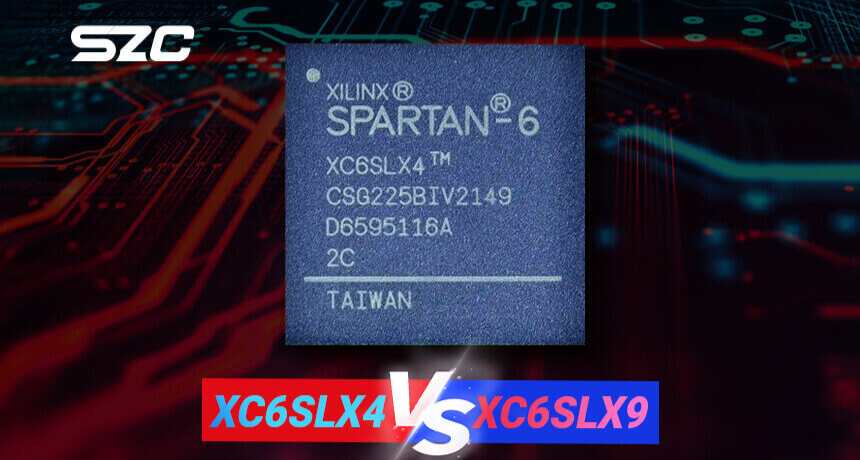 XC6SLX4 vs XC6SLX9: Which One is Better?Harnessing the Potential of XC6SLX4 and XC6SLX9 FPGAs for Enhanced Performance and Versatility.
XC6SLX4 vs XC6SLX9: Which One is Better?Harnessing the Potential of XC6SLX4 and XC6SLX9 FPGAs for Enhanced Performance and Versatility. Top 10 Microcontroller Manufacturers in the USAExplore top 10 USA's microcontroller innovation, revealing top players shaping electronics. Buckle up for a game-changing journey!
Top 10 Microcontroller Manufacturers in the USAExplore top 10 USA's microcontroller innovation, revealing top players shaping electronics. Buckle up for a game-changing journey! Film vs. Ceramic: Choosing the Right Capacitor for YouExplore the world of electronic components as we demystify film and ceramic capacitors. Buckle up for a captivating journey through the currents of capacitance in this tech enthusiast's guide.
Film vs. Ceramic: Choosing the Right Capacitor for YouExplore the world of electronic components as we demystify film and ceramic capacitors. Buckle up for a captivating journey through the currents of capacitance in this tech enthusiast's guide. Explore Top 10 RF Mixer Manufacturers in the USAReady to discover the USA's top 10 RF mixer makers? Join us for an electrifying trip through innovation.
Explore Top 10 RF Mixer Manufacturers in the USAReady to discover the USA's top 10 RF mixer makers? Join us for an electrifying trip through innovation. SZComponents Wins "International Potential Star Distributor" AwardJoin us in celebrating SZComponents' remarkable win as the "International Potential Star Distributor" and explore their journey to success.
SZComponents Wins "International Potential Star Distributor" AwardJoin us in celebrating SZComponents' remarkable win as the "International Potential Star Distributor" and explore their journey to success.
 Unveiling the Future: The Surge of Microcontrollers in 2024In the dynamic world of electronic components, microcontrollers stand out as a testament to innovation and versatility. As we edge closer to 2024, the landscape for microcontrollers and semiconductors, spearheaded by giants like STMicroelectronics, Texas Instruments, and Microchip, is set for remarkable transformation.
Unveiling the Future: The Surge of Microcontrollers in 2024In the dynamic world of electronic components, microcontrollers stand out as a testament to innovation and versatility. As we edge closer to 2024, the landscape for microcontrollers and semiconductors, spearheaded by giants like STMicroelectronics, Texas Instruments, and Microchip, is set for remarkable transformation. Microcontrollers vs. Microprocessors: Unveiling the Core Differences for Embedded Systems EngineeringSeasoned professionals in the realm of embedded systems engineering and product development within the electronics sphere often grapple with distinguishing between microcontrollers and microprocessors. Despite their foundational role in the design and fabrication of a myriad of electronic gadgets, understanding their unique functionalities based on mere definitions can be challenging:
Microcontrollers vs. Microprocessors: Unveiling the Core Differences for Embedded Systems EngineeringSeasoned professionals in the realm of embedded systems engineering and product development within the electronics sphere often grapple with distinguishing between microcontrollers and microprocessors. Despite their foundational role in the design and fabrication of a myriad of electronic gadgets, understanding their unique functionalities based on mere definitions can be challenging: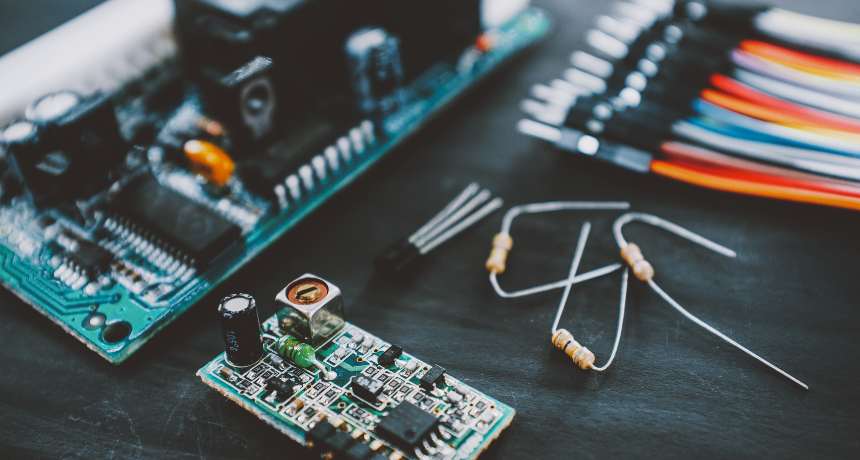 A Deep Dive into the Global Ceramic Capacitors MarketJoin us in exploring the emerging subplot of environmental consciousness within the global ceramic capacitors market.
A Deep Dive into the Global Ceramic Capacitors MarketJoin us in exploring the emerging subplot of environmental consciousness within the global ceramic capacitors market.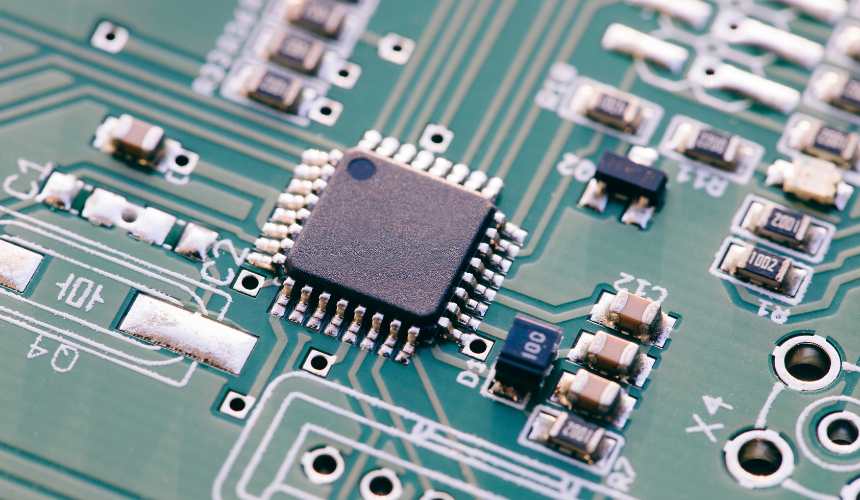 Mastering Current Measurement with MicrocontrollersUnlock precise current measurement secrets with Microcontrollers! Conquer challenges, meet superhero solutions, and revolutionize accuracy with on-chip Analog Core Independent Peripherals (CIPs).
Mastering Current Measurement with MicrocontrollersUnlock precise current measurement secrets with Microcontrollers! Conquer challenges, meet superhero solutions, and revolutionize accuracy with on-chip Analog Core Independent Peripherals (CIPs).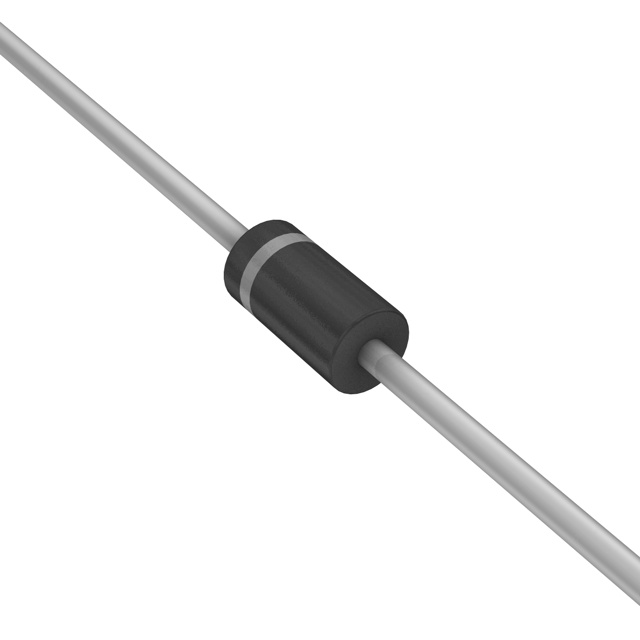 What is a Rectifier Diode: A Guide to BeginnersMeet the unsung heroes of electronics—Rectifier Diodes! Explore their magic, applications, and join the behind-the-scenes adventure into gadget power.
What is a Rectifier Diode: A Guide to BeginnersMeet the unsung heroes of electronics—Rectifier Diodes! Explore their magic, applications, and join the behind-the-scenes adventure into gadget power.
 FPGAs Face-Off: XC6SLX16 vs XC6SLX25Unlock the secrets of FPGAs with our quick guide! XC6SLX16 or XC6SLX25—Which one holds the key to your next tech adventure? Click now to explore the world of programmable possibilities!
FPGAs Face-Off: XC6SLX16 vs XC6SLX25Unlock the secrets of FPGAs with our quick guide! XC6SLX16 or XC6SLX25—Which one holds the key to your next tech adventure? Click now to explore the world of programmable possibilities!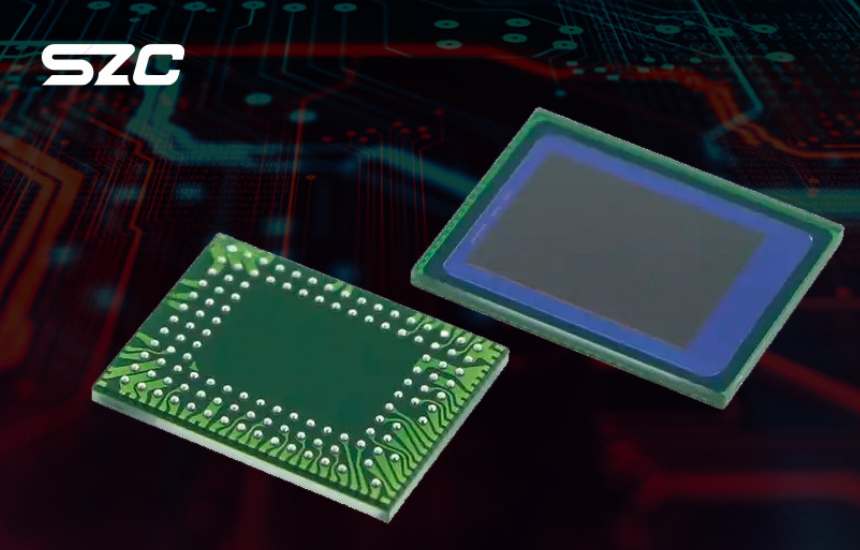 Enhancing Road Safety with onsemi's Advanced Image SensorsMeet onsemi's AR0220AT, a night-savvy game-changer in Advanced Driver Assistance Systems.
Enhancing Road Safety with onsemi's Advanced Image SensorsMeet onsemi's AR0220AT, a night-savvy game-changer in Advanced Driver Assistance Systems.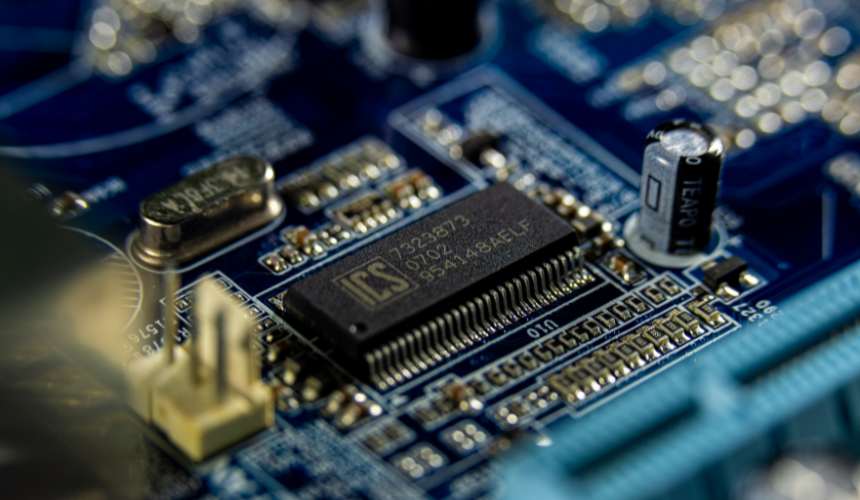 Texas Instruments Picks Lehi, Utah for Cutting-Edge Semiconductor HubTexas Instruments (TI) has chosen Lehi, Utah, as the site for its upcoming 300-millimeter semiconductor wafer fabrication plant (fab).
Texas Instruments Picks Lehi, Utah for Cutting-Edge Semiconductor HubTexas Instruments (TI) has chosen Lehi, Utah, as the site for its upcoming 300-millimeter semiconductor wafer fabrication plant (fab). Thanksgiving Greetings from SZComponentsThank you for being an integral part of the SZComponents family. Happy Thanksgiving!
Thanksgiving Greetings from SZComponentsThank you for being an integral part of the SZComponents family. Happy Thanksgiving!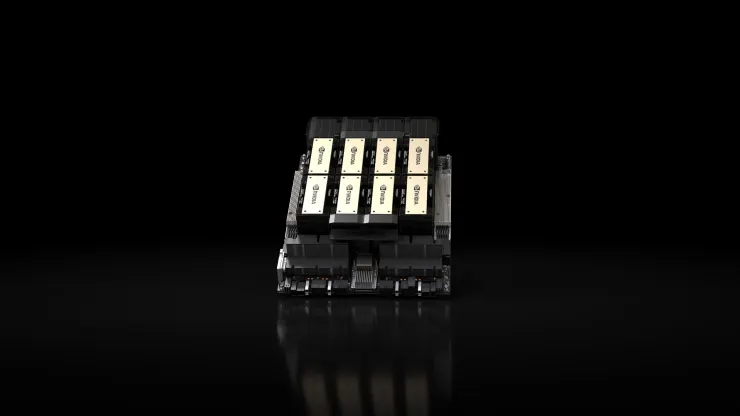 Discover the power of Nvidia H200 for AI model trainingDiscover the cutting-edge possibilities of AI training with Nvidia's H200 chip. Unlock the ultimate potential for your AI models and revolutionize your work.
Discover the power of Nvidia H200 for AI model trainingDiscover the cutting-edge possibilities of AI training with Nvidia's H200 chip. Unlock the ultimate potential for your AI models and revolutionize your work.
 XC6SLX4 vs XC6SLX9: Which One is Better?Harnessing the Potential of XC6SLX4 and XC6SLX9 FPGAs for Enhanced Performance and Versatility.
XC6SLX4 vs XC6SLX9: Which One is Better?Harnessing the Potential of XC6SLX4 and XC6SLX9 FPGAs for Enhanced Performance and Versatility. Top 10 Microcontroller Manufacturers in the USAExplore top 10 USA's microcontroller innovation, revealing top players shaping electronics. Buckle up for a game-changing journey!
Top 10 Microcontroller Manufacturers in the USAExplore top 10 USA's microcontroller innovation, revealing top players shaping electronics. Buckle up for a game-changing journey! Film vs. Ceramic: Choosing the Right Capacitor for YouExplore the world of electronic components as we demystify film and ceramic capacitors. Buckle up for a captivating journey through the currents of capacitance in this tech enthusiast's guide.
Film vs. Ceramic: Choosing the Right Capacitor for YouExplore the world of electronic components as we demystify film and ceramic capacitors. Buckle up for a captivating journey through the currents of capacitance in this tech enthusiast's guide. Explore Top 10 RF Mixer Manufacturers in the USAReady to discover the USA's top 10 RF mixer makers? Join us for an electrifying trip through innovation.
Explore Top 10 RF Mixer Manufacturers in the USAReady to discover the USA's top 10 RF mixer makers? Join us for an electrifying trip through innovation. SZComponents Wins "International Potential Star Distributor" AwardJoin us in celebrating SZComponents' remarkable win as the "International Potential Star Distributor" and explore their journey to success.
SZComponents Wins "International Potential Star Distributor" AwardJoin us in celebrating SZComponents' remarkable win as the "International Potential Star Distributor" and explore their journey to success.
 Unveiling the Future: The Surge of Microcontrollers in 2024In the dynamic world of electronic components, microcontrollers stand out as a testament to innovation and versatility. As we edge closer to 2024, the landscape for microcontrollers and semiconductors, spearheaded by giants like STMicroelectronics, Texas Instruments, and Microchip, is set for remarkable transformation.
Unveiling the Future: The Surge of Microcontrollers in 2024In the dynamic world of electronic components, microcontrollers stand out as a testament to innovation and versatility. As we edge closer to 2024, the landscape for microcontrollers and semiconductors, spearheaded by giants like STMicroelectronics, Texas Instruments, and Microchip, is set for remarkable transformation. Microcontrollers vs. Microprocessors: Unveiling the Core Differences for Embedded Systems EngineeringSeasoned professionals in the realm of embedded systems engineering and product development within the electronics sphere often grapple with distinguishing between microcontrollers and microprocessors. Despite their foundational role in the design and fabrication of a myriad of electronic gadgets, understanding their unique functionalities based on mere definitions can be challenging:
Microcontrollers vs. Microprocessors: Unveiling the Core Differences for Embedded Systems EngineeringSeasoned professionals in the realm of embedded systems engineering and product development within the electronics sphere often grapple with distinguishing between microcontrollers and microprocessors. Despite their foundational role in the design and fabrication of a myriad of electronic gadgets, understanding their unique functionalities based on mere definitions can be challenging: A Deep Dive into the Global Ceramic Capacitors MarketJoin us in exploring the emerging subplot of environmental consciousness within the global ceramic capacitors market.
A Deep Dive into the Global Ceramic Capacitors MarketJoin us in exploring the emerging subplot of environmental consciousness within the global ceramic capacitors market. Mastering Current Measurement with MicrocontrollersUnlock precise current measurement secrets with Microcontrollers! Conquer challenges, meet superhero solutions, and revolutionize accuracy with on-chip Analog Core Independent Peripherals (CIPs).
Mastering Current Measurement with MicrocontrollersUnlock precise current measurement secrets with Microcontrollers! Conquer challenges, meet superhero solutions, and revolutionize accuracy with on-chip Analog Core Independent Peripherals (CIPs). What is a Rectifier Diode: A Guide to BeginnersMeet the unsung heroes of electronics—Rectifier Diodes! Explore their magic, applications, and join the behind-the-scenes adventure into gadget power.
What is a Rectifier Diode: A Guide to BeginnersMeet the unsung heroes of electronics—Rectifier Diodes! Explore their magic, applications, and join the behind-the-scenes adventure into gadget power.
 FPGAs Face-Off: XC6SLX16 vs XC6SLX25Unlock the secrets of FPGAs with our quick guide! XC6SLX16 or XC6SLX25—Which one holds the key to your next tech adventure? Click now to explore the world of programmable possibilities!
FPGAs Face-Off: XC6SLX16 vs XC6SLX25Unlock the secrets of FPGAs with our quick guide! XC6SLX16 or XC6SLX25—Which one holds the key to your next tech adventure? Click now to explore the world of programmable possibilities! Enhancing Road Safety with onsemi's Advanced Image SensorsMeet onsemi's AR0220AT, a night-savvy game-changer in Advanced Driver Assistance Systems.
Enhancing Road Safety with onsemi's Advanced Image SensorsMeet onsemi's AR0220AT, a night-savvy game-changer in Advanced Driver Assistance Systems. Texas Instruments Picks Lehi, Utah for Cutting-Edge Semiconductor HubTexas Instruments (TI) has chosen Lehi, Utah, as the site for its upcoming 300-millimeter semiconductor wafer fabrication plant (fab).
Texas Instruments Picks Lehi, Utah for Cutting-Edge Semiconductor HubTexas Instruments (TI) has chosen Lehi, Utah, as the site for its upcoming 300-millimeter semiconductor wafer fabrication plant (fab). Thanksgiving Greetings from SZComponentsThank you for being an integral part of the SZComponents family. Happy Thanksgiving!
Thanksgiving Greetings from SZComponentsThank you for being an integral part of the SZComponents family. Happy Thanksgiving! Discover the power of Nvidia H200 for AI model trainingDiscover the cutting-edge possibilities of AI training with Nvidia's H200 chip. Unlock the ultimate potential for your AI models and revolutionize your work.
Discover the power of Nvidia H200 for AI model trainingDiscover the cutting-edge possibilities of AI training with Nvidia's H200 chip. Unlock the ultimate potential for your AI models and revolutionize your work.
 XC6SLX4 vs XC6SLX9: Which One is Better?Harnessing the Potential of XC6SLX4 and XC6SLX9 FPGAs for Enhanced Performance and Versatility.
XC6SLX4 vs XC6SLX9: Which One is Better?Harnessing the Potential of XC6SLX4 and XC6SLX9 FPGAs for Enhanced Performance and Versatility. Top 10 Microcontroller Manufacturers in the USAExplore top 10 USA's microcontroller innovation, revealing top players shaping electronics. Buckle up for a game-changing journey!
Top 10 Microcontroller Manufacturers in the USAExplore top 10 USA's microcontroller innovation, revealing top players shaping electronics. Buckle up for a game-changing journey! Film vs. Ceramic: Choosing the Right Capacitor for YouExplore the world of electronic components as we demystify film and ceramic capacitors. Buckle up for a captivating journey through the currents of capacitance in this tech enthusiast's guide.
Film vs. Ceramic: Choosing the Right Capacitor for YouExplore the world of electronic components as we demystify film and ceramic capacitors. Buckle up for a captivating journey through the currents of capacitance in this tech enthusiast's guide. Explore Top 10 RF Mixer Manufacturers in the USAReady to discover the USA's top 10 RF mixer makers? Join us for an electrifying trip through innovation.
Explore Top 10 RF Mixer Manufacturers in the USAReady to discover the USA's top 10 RF mixer makers? Join us for an electrifying trip through innovation. SZComponents Wins "International Potential Star Distributor" AwardJoin us in celebrating SZComponents' remarkable win as the "International Potential Star Distributor" and explore their journey to success.
SZComponents Wins "International Potential Star Distributor" AwardJoin us in celebrating SZComponents' remarkable win as the "International Potential Star Distributor" and explore their journey to success.
$0.41
Price update:a months ago
Microchip Technology
Microchip Technology Inc., headquartered in Chandler, Arizona, leads in microcontrollers and analog semiconductors, facilitating diverse global applications with innovative solutions, low-risk development, and dependable quality assurance.
View All Product from Microchip TechnologyPopular Products
 DSC1102NI1-156.2500TMEMS OSC., LOW JITTER, 156.25MHZPrice negotiable Detail
DSC1102NI1-156.2500TMEMS OSC., LOW JITTER, 156.25MHZPrice negotiable Detail DSC1001DL2-022.5792TMEMS OSC XO 22.5792MHZ CMOS SMDPrice negotiable Detail
DSC1001DL2-022.5792TMEMS OSC XO 22.5792MHZ CMOS SMDPrice negotiable Detail SY100E167JC-TRIC MULTIPLEXER 6 X 2:1 28PLCCPrice negotiable Detail
SY100E167JC-TRIC MULTIPLEXER 6 X 2:1 28PLCCPrice negotiable Detail MIC281-5BM6-TRSENSOR DIGITAL REMOTE SOT23-6$1.06 Detail
MIC281-5BM6-TRSENSOR DIGITAL REMOTE SOT23-6$1.06 Detail JAN1N4622-1/TRVOLTAGE REGULATOR$3.33 Detail
JAN1N4622-1/TRVOLTAGE REGULATOR$3.33 Detail
 PIC32MX120F032DT-I/PTIC MCU 32BIT 32KB FLASH 44TQFP$1.38 Detail
PIC32MX120F032DT-I/PTIC MCU 32BIT 32KB FLASH 44TQFP$1.38 Detail PIC32MZ2048ECG064-I/PTIC MCU 32BIT 2MB FLASH 64TQFP$62.24 Detail
PIC32MZ2048ECG064-I/PTIC MCU 32BIT 2MB FLASH 64TQFP$62.24 Detail MCP4542-103E/MSIC DGTL POT 10KOHM 129TAP 8MSOP$0.90 Detail
MCP4542-103E/MSIC DGTL POT 10KOHM 129TAP 8MSOP$0.90 Detail DSPIC33EP64MC504T-I/PTIC MCU 16BIT 64KB FLASH 44TQFP$3.90 Detail
DSPIC33EP64MC504T-I/PTIC MCU 16BIT 64KB FLASH 44TQFP$3.90 Detail- MIC5207-2.5BM5-TRIC REG LINEAR 2.5V 180MA SOT23-5$0.38 Detail
 DSC1102NI1-156.2500TMEMS OSC., LOW JITTER, 156.25MHZPrice negotiable Detail
DSC1102NI1-156.2500TMEMS OSC., LOW JITTER, 156.25MHZPrice negotiable Detail DSC1001DL2-022.5792TMEMS OSC XO 22.5792MHZ CMOS SMDPrice negotiable Detail
DSC1001DL2-022.5792TMEMS OSC XO 22.5792MHZ CMOS SMDPrice negotiable Detail SY100E167JC-TRIC MULTIPLEXER 6 X 2:1 28PLCCPrice negotiable Detail
SY100E167JC-TRIC MULTIPLEXER 6 X 2:1 28PLCCPrice negotiable Detail MIC281-5BM6-TRSENSOR DIGITAL REMOTE SOT23-6$1.06 Detail
MIC281-5BM6-TRSENSOR DIGITAL REMOTE SOT23-6$1.06 Detail JAN1N4622-1/TRVOLTAGE REGULATOR$3.33 Detail
JAN1N4622-1/TRVOLTAGE REGULATOR$3.33 Detail
 PIC32MX120F032DT-I/PTIC MCU 32BIT 32KB FLASH 44TQFP$1.38 Detail
PIC32MX120F032DT-I/PTIC MCU 32BIT 32KB FLASH 44TQFP$1.38 Detail PIC32MZ2048ECG064-I/PTIC MCU 32BIT 2MB FLASH 64TQFP$62.24 Detail
PIC32MZ2048ECG064-I/PTIC MCU 32BIT 2MB FLASH 64TQFP$62.24 Detail MCP4542-103E/MSIC DGTL POT 10KOHM 129TAP 8MSOP$0.90 Detail
MCP4542-103E/MSIC DGTL POT 10KOHM 129TAP 8MSOP$0.90 Detail DSPIC33EP64MC504T-I/PTIC MCU 16BIT 64KB FLASH 44TQFP$3.90 Detail
DSPIC33EP64MC504T-I/PTIC MCU 16BIT 64KB FLASH 44TQFP$3.90 Detail- MIC5207-2.5BM5-TRIC REG LINEAR 2.5V 180MA SOT23-5$0.38 Detail
 DSC1102NI1-156.2500TMEMS OSC., LOW JITTER, 156.25MHZPrice negotiable Detail
DSC1102NI1-156.2500TMEMS OSC., LOW JITTER, 156.25MHZPrice negotiable Detail DSC1001DL2-022.5792TMEMS OSC XO 22.5792MHZ CMOS SMDPrice negotiable Detail
DSC1001DL2-022.5792TMEMS OSC XO 22.5792MHZ CMOS SMDPrice negotiable Detail SY100E167JC-TRIC MULTIPLEXER 6 X 2:1 28PLCCPrice negotiable Detail
SY100E167JC-TRIC MULTIPLEXER 6 X 2:1 28PLCCPrice negotiable Detail MIC281-5BM6-TRSENSOR DIGITAL REMOTE SOT23-6$1.06 Detail
MIC281-5BM6-TRSENSOR DIGITAL REMOTE SOT23-6$1.06 Detail JAN1N4622-1/TRVOLTAGE REGULATOR$3.33 Detail
JAN1N4622-1/TRVOLTAGE REGULATOR$3.33 Detail
Blog
 XC6SLX4 vs XC6SLX9: Which One is Better?Harnessing the Potential of XC6SLX4 and XC6SLX9 FPGAs for Enhanced Performance and Versatility.
XC6SLX4 vs XC6SLX9: Which One is Better?Harnessing the Potential of XC6SLX4 and XC6SLX9 FPGAs for Enhanced Performance and Versatility. Top 10 Microcontroller Manufacturers in the USAExplore top 10 USA's microcontroller innovation, revealing top players shaping electronics. Buckle up for a game-changing journey!
Top 10 Microcontroller Manufacturers in the USAExplore top 10 USA's microcontroller innovation, revealing top players shaping electronics. Buckle up for a game-changing journey! Film vs. Ceramic: Choosing the Right Capacitor for YouExplore the world of electronic components as we demystify film and ceramic capacitors. Buckle up for a captivating journey through the currents of capacitance in this tech enthusiast's guide.
Film vs. Ceramic: Choosing the Right Capacitor for YouExplore the world of electronic components as we demystify film and ceramic capacitors. Buckle up for a captivating journey through the currents of capacitance in this tech enthusiast's guide. Explore Top 10 RF Mixer Manufacturers in the USAReady to discover the USA's top 10 RF mixer makers? Join us for an electrifying trip through innovation.
Explore Top 10 RF Mixer Manufacturers in the USAReady to discover the USA's top 10 RF mixer makers? Join us for an electrifying trip through innovation. SZComponents Wins "International Potential Star Distributor" AwardJoin us in celebrating SZComponents' remarkable win as the "International Potential Star Distributor" and explore their journey to success.
SZComponents Wins "International Potential Star Distributor" AwardJoin us in celebrating SZComponents' remarkable win as the "International Potential Star Distributor" and explore their journey to success.
 Unveiling the Future: The Surge of Microcontrollers in 2024In the dynamic world of electronic components, microcontrollers stand out as a testament to innovation and versatility. As we edge closer to 2024, the landscape for microcontrollers and semiconductors, spearheaded by giants like STMicroelectronics, Texas Instruments, and Microchip, is set for remarkable transformation.
Unveiling the Future: The Surge of Microcontrollers in 2024In the dynamic world of electronic components, microcontrollers stand out as a testament to innovation and versatility. As we edge closer to 2024, the landscape for microcontrollers and semiconductors, spearheaded by giants like STMicroelectronics, Texas Instruments, and Microchip, is set for remarkable transformation. Microcontrollers vs. Microprocessors: Unveiling the Core Differences for Embedded Systems EngineeringSeasoned professionals in the realm of embedded systems engineering and product development within the electronics sphere often grapple with distinguishing between microcontrollers and microprocessors. Despite their foundational role in the design and fabrication of a myriad of electronic gadgets, understanding their unique functionalities based on mere definitions can be challenging:
Microcontrollers vs. Microprocessors: Unveiling the Core Differences for Embedded Systems EngineeringSeasoned professionals in the realm of embedded systems engineering and product development within the electronics sphere often grapple with distinguishing between microcontrollers and microprocessors. Despite their foundational role in the design and fabrication of a myriad of electronic gadgets, understanding their unique functionalities based on mere definitions can be challenging: A Deep Dive into the Global Ceramic Capacitors MarketJoin us in exploring the emerging subplot of environmental consciousness within the global ceramic capacitors market.
A Deep Dive into the Global Ceramic Capacitors MarketJoin us in exploring the emerging subplot of environmental consciousness within the global ceramic capacitors market. Mastering Current Measurement with MicrocontrollersUnlock precise current measurement secrets with Microcontrollers! Conquer challenges, meet superhero solutions, and revolutionize accuracy with on-chip Analog Core Independent Peripherals (CIPs).
Mastering Current Measurement with MicrocontrollersUnlock precise current measurement secrets with Microcontrollers! Conquer challenges, meet superhero solutions, and revolutionize accuracy with on-chip Analog Core Independent Peripherals (CIPs). What is a Rectifier Diode: A Guide to BeginnersMeet the unsung heroes of electronics—Rectifier Diodes! Explore their magic, applications, and join the behind-the-scenes adventure into gadget power.
What is a Rectifier Diode: A Guide to BeginnersMeet the unsung heroes of electronics—Rectifier Diodes! Explore their magic, applications, and join the behind-the-scenes adventure into gadget power.
 FPGAs Face-Off: XC6SLX16 vs XC6SLX25Unlock the secrets of FPGAs with our quick guide! XC6SLX16 or XC6SLX25—Which one holds the key to your next tech adventure? Click now to explore the world of programmable possibilities!
FPGAs Face-Off: XC6SLX16 vs XC6SLX25Unlock the secrets of FPGAs with our quick guide! XC6SLX16 or XC6SLX25—Which one holds the key to your next tech adventure? Click now to explore the world of programmable possibilities! Enhancing Road Safety with onsemi's Advanced Image SensorsMeet onsemi's AR0220AT, a night-savvy game-changer in Advanced Driver Assistance Systems.
Enhancing Road Safety with onsemi's Advanced Image SensorsMeet onsemi's AR0220AT, a night-savvy game-changer in Advanced Driver Assistance Systems. Texas Instruments Picks Lehi, Utah for Cutting-Edge Semiconductor HubTexas Instruments (TI) has chosen Lehi, Utah, as the site for its upcoming 300-millimeter semiconductor wafer fabrication plant (fab).
Texas Instruments Picks Lehi, Utah for Cutting-Edge Semiconductor HubTexas Instruments (TI) has chosen Lehi, Utah, as the site for its upcoming 300-millimeter semiconductor wafer fabrication plant (fab). Thanksgiving Greetings from SZComponentsThank you for being an integral part of the SZComponents family. Happy Thanksgiving!
Thanksgiving Greetings from SZComponentsThank you for being an integral part of the SZComponents family. Happy Thanksgiving! Discover the power of Nvidia H200 for AI model trainingDiscover the cutting-edge possibilities of AI training with Nvidia's H200 chip. Unlock the ultimate potential for your AI models and revolutionize your work.
Discover the power of Nvidia H200 for AI model trainingDiscover the cutting-edge possibilities of AI training with Nvidia's H200 chip. Unlock the ultimate potential for your AI models and revolutionize your work.
 XC6SLX4 vs XC6SLX9: Which One is Better?Harnessing the Potential of XC6SLX4 and XC6SLX9 FPGAs for Enhanced Performance and Versatility.
XC6SLX4 vs XC6SLX9: Which One is Better?Harnessing the Potential of XC6SLX4 and XC6SLX9 FPGAs for Enhanced Performance and Versatility. Top 10 Microcontroller Manufacturers in the USAExplore top 10 USA's microcontroller innovation, revealing top players shaping electronics. Buckle up for a game-changing journey!
Top 10 Microcontroller Manufacturers in the USAExplore top 10 USA's microcontroller innovation, revealing top players shaping electronics. Buckle up for a game-changing journey! Film vs. Ceramic: Choosing the Right Capacitor for YouExplore the world of electronic components as we demystify film and ceramic capacitors. Buckle up for a captivating journey through the currents of capacitance in this tech enthusiast's guide.
Film vs. Ceramic: Choosing the Right Capacitor for YouExplore the world of electronic components as we demystify film and ceramic capacitors. Buckle up for a captivating journey through the currents of capacitance in this tech enthusiast's guide. Explore Top 10 RF Mixer Manufacturers in the USAReady to discover the USA's top 10 RF mixer makers? Join us for an electrifying trip through innovation.
Explore Top 10 RF Mixer Manufacturers in the USAReady to discover the USA's top 10 RF mixer makers? Join us for an electrifying trip through innovation. SZComponents Wins "International Potential Star Distributor" AwardJoin us in celebrating SZComponents' remarkable win as the "International Potential Star Distributor" and explore their journey to success.
SZComponents Wins "International Potential Star Distributor" AwardJoin us in celebrating SZComponents' remarkable win as the "International Potential Star Distributor" and explore their journey to success.
 Unveiling the Future: The Surge of Microcontrollers in 2024In the dynamic world of electronic components, microcontrollers stand out as a testament to innovation and versatility. As we edge closer to 2024, the landscape for microcontrollers and semiconductors, spearheaded by giants like STMicroelectronics, Texas Instruments, and Microchip, is set for remarkable transformation.
Unveiling the Future: The Surge of Microcontrollers in 2024In the dynamic world of electronic components, microcontrollers stand out as a testament to innovation and versatility. As we edge closer to 2024, the landscape for microcontrollers and semiconductors, spearheaded by giants like STMicroelectronics, Texas Instruments, and Microchip, is set for remarkable transformation. Microcontrollers vs. Microprocessors: Unveiling the Core Differences for Embedded Systems EngineeringSeasoned professionals in the realm of embedded systems engineering and product development within the electronics sphere often grapple with distinguishing between microcontrollers and microprocessors. Despite their foundational role in the design and fabrication of a myriad of electronic gadgets, understanding their unique functionalities based on mere definitions can be challenging:
Microcontrollers vs. Microprocessors: Unveiling the Core Differences for Embedded Systems EngineeringSeasoned professionals in the realm of embedded systems engineering and product development within the electronics sphere often grapple with distinguishing between microcontrollers and microprocessors. Despite their foundational role in the design and fabrication of a myriad of electronic gadgets, understanding their unique functionalities based on mere definitions can be challenging: A Deep Dive into the Global Ceramic Capacitors MarketJoin us in exploring the emerging subplot of environmental consciousness within the global ceramic capacitors market.
A Deep Dive into the Global Ceramic Capacitors MarketJoin us in exploring the emerging subplot of environmental consciousness within the global ceramic capacitors market. Mastering Current Measurement with MicrocontrollersUnlock precise current measurement secrets with Microcontrollers! Conquer challenges, meet superhero solutions, and revolutionize accuracy with on-chip Analog Core Independent Peripherals (CIPs).
Mastering Current Measurement with MicrocontrollersUnlock precise current measurement secrets with Microcontrollers! Conquer challenges, meet superhero solutions, and revolutionize accuracy with on-chip Analog Core Independent Peripherals (CIPs). What is a Rectifier Diode: A Guide to BeginnersMeet the unsung heroes of electronics—Rectifier Diodes! Explore their magic, applications, and join the behind-the-scenes adventure into gadget power.
What is a Rectifier Diode: A Guide to BeginnersMeet the unsung heroes of electronics—Rectifier Diodes! Explore their magic, applications, and join the behind-the-scenes adventure into gadget power.
 FPGAs Face-Off: XC6SLX16 vs XC6SLX25Unlock the secrets of FPGAs with our quick guide! XC6SLX16 or XC6SLX25—Which one holds the key to your next tech adventure? Click now to explore the world of programmable possibilities!
FPGAs Face-Off: XC6SLX16 vs XC6SLX25Unlock the secrets of FPGAs with our quick guide! XC6SLX16 or XC6SLX25—Which one holds the key to your next tech adventure? Click now to explore the world of programmable possibilities! Enhancing Road Safety with onsemi's Advanced Image SensorsMeet onsemi's AR0220AT, a night-savvy game-changer in Advanced Driver Assistance Systems.
Enhancing Road Safety with onsemi's Advanced Image SensorsMeet onsemi's AR0220AT, a night-savvy game-changer in Advanced Driver Assistance Systems. Texas Instruments Picks Lehi, Utah for Cutting-Edge Semiconductor HubTexas Instruments (TI) has chosen Lehi, Utah, as the site for its upcoming 300-millimeter semiconductor wafer fabrication plant (fab).
Texas Instruments Picks Lehi, Utah for Cutting-Edge Semiconductor HubTexas Instruments (TI) has chosen Lehi, Utah, as the site for its upcoming 300-millimeter semiconductor wafer fabrication plant (fab). Thanksgiving Greetings from SZComponentsThank you for being an integral part of the SZComponents family. Happy Thanksgiving!
Thanksgiving Greetings from SZComponentsThank you for being an integral part of the SZComponents family. Happy Thanksgiving! Discover the power of Nvidia H200 for AI model trainingDiscover the cutting-edge possibilities of AI training with Nvidia's H200 chip. Unlock the ultimate potential for your AI models and revolutionize your work.
Discover the power of Nvidia H200 for AI model trainingDiscover the cutting-edge possibilities of AI training with Nvidia's H200 chip. Unlock the ultimate potential for your AI models and revolutionize your work.
 XC6SLX4 vs XC6SLX9: Which One is Better?Harnessing the Potential of XC6SLX4 and XC6SLX9 FPGAs for Enhanced Performance and Versatility.
XC6SLX4 vs XC6SLX9: Which One is Better?Harnessing the Potential of XC6SLX4 and XC6SLX9 FPGAs for Enhanced Performance and Versatility. Top 10 Microcontroller Manufacturers in the USAExplore top 10 USA's microcontroller innovation, revealing top players shaping electronics. Buckle up for a game-changing journey!
Top 10 Microcontroller Manufacturers in the USAExplore top 10 USA's microcontroller innovation, revealing top players shaping electronics. Buckle up for a game-changing journey! Film vs. Ceramic: Choosing the Right Capacitor for YouExplore the world of electronic components as we demystify film and ceramic capacitors. Buckle up for a captivating journey through the currents of capacitance in this tech enthusiast's guide.
Film vs. Ceramic: Choosing the Right Capacitor for YouExplore the world of electronic components as we demystify film and ceramic capacitors. Buckle up for a captivating journey through the currents of capacitance in this tech enthusiast's guide. Explore Top 10 RF Mixer Manufacturers in the USAReady to discover the USA's top 10 RF mixer makers? Join us for an electrifying trip through innovation.
Explore Top 10 RF Mixer Manufacturers in the USAReady to discover the USA's top 10 RF mixer makers? Join us for an electrifying trip through innovation. SZComponents Wins "International Potential Star Distributor" AwardJoin us in celebrating SZComponents' remarkable win as the "International Potential Star Distributor" and explore their journey to success.
SZComponents Wins "International Potential Star Distributor" AwardJoin us in celebrating SZComponents' remarkable win as the "International Potential Star Distributor" and explore their journey to success.
Popular Manufacturers
View all manufactures MorePopular Parts Number
More Electronic Parts More
ATSAMG54N19B-AU
IC MCU 32BIT 512KB FLASH 100LQFP
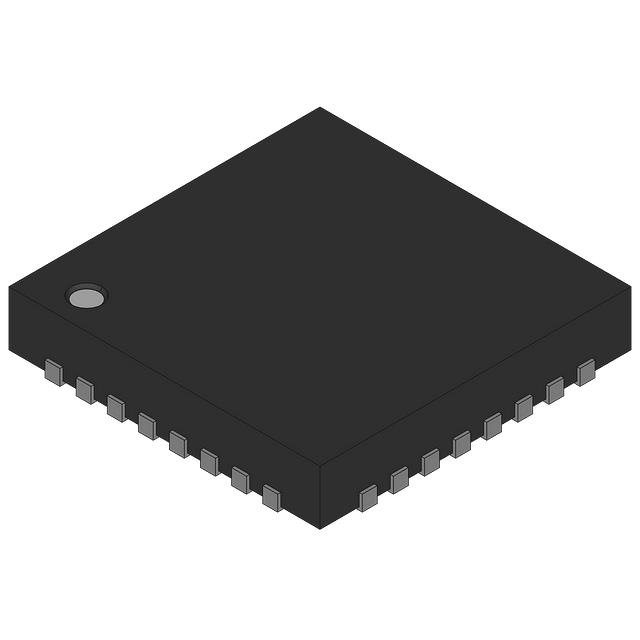
ATMEGA168-15MT1
IC MCU 8BIT 16KB FLASH 32QFN
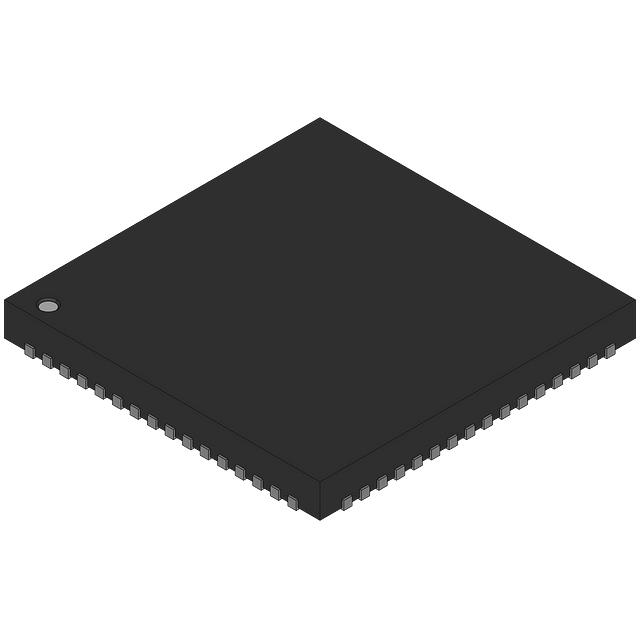
ATMEGA169P-16MCU
IC MCU 8BIT 16KB FLASH 64QFN
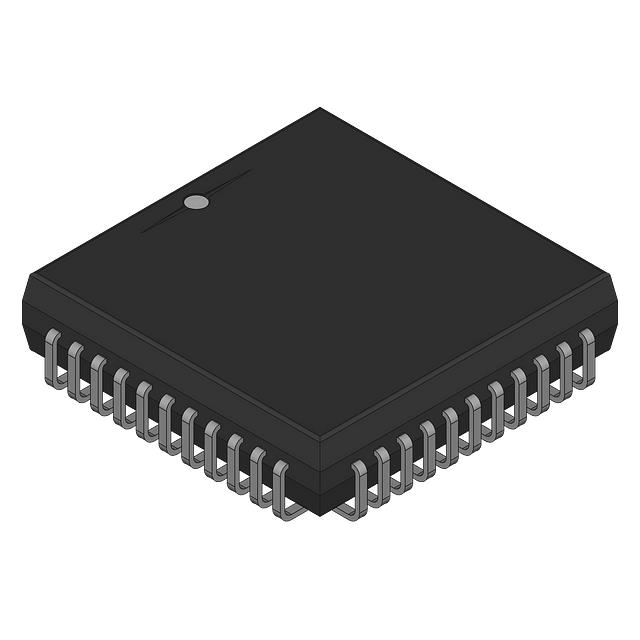
AT87C51RB2-SLSUL
IC MCU 8BIT 16KB OTP 44PLCC
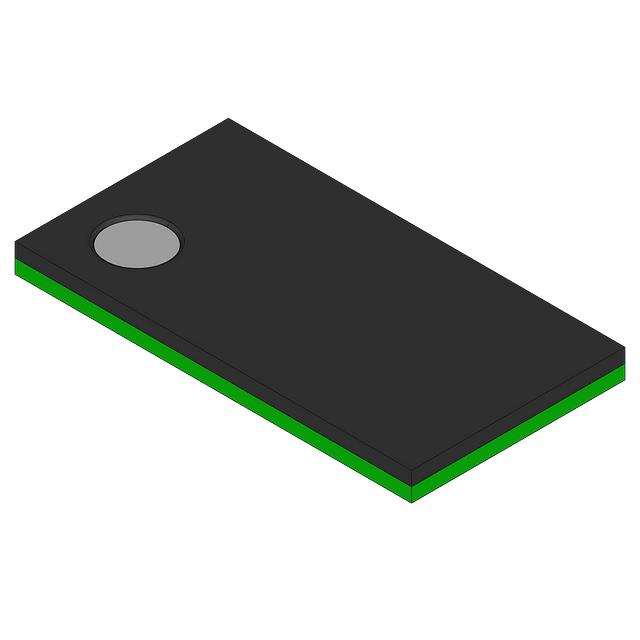
ATMEGA16HVA-4CKU
IC MCU 8BIT 16KB FLASH 36LGA
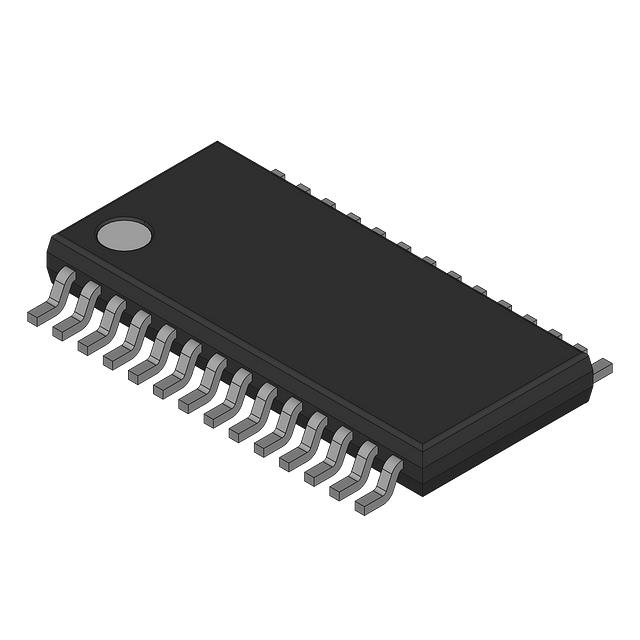
ATMEGA16HVA-4TU
IC MCU 8BIT 16KB FLASH 28TSOP
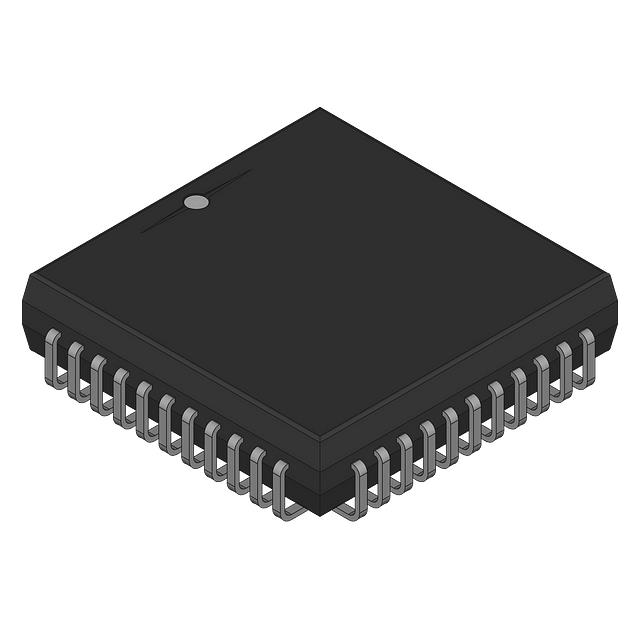
AT87C52X2-SLSUV
IC MCU 8BIT 8KB OTP 44PLCC
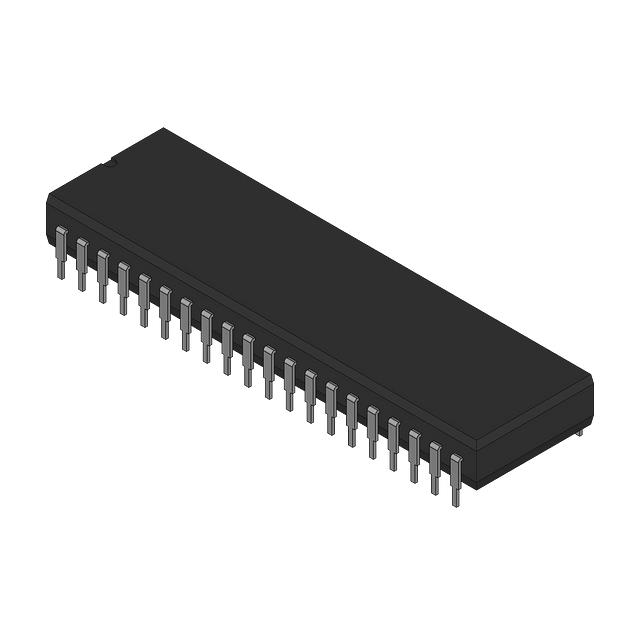
AT87C58X2-3CSUM
IC MCU 8BIT 32KB OTP 40PDIL
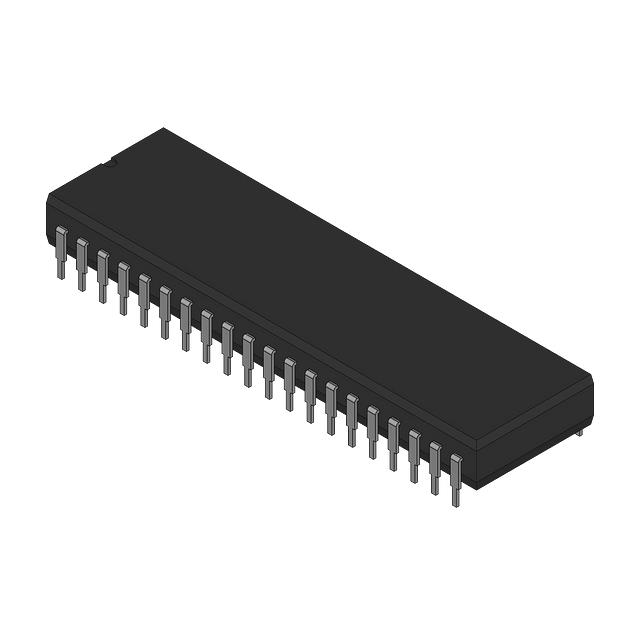
AT87C51RC2-3CSUM
IC MCU 8BIT 32KB OTP 40PDIL
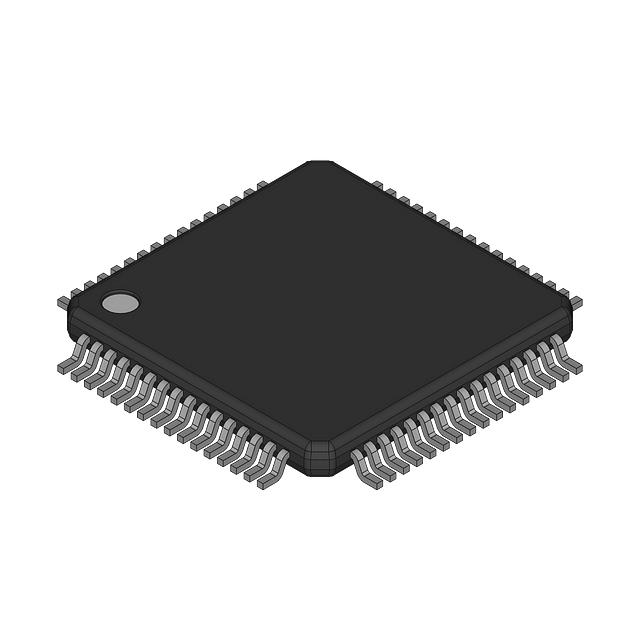
ATMEGA169V-8AU
IC MCU 8BIT 16KB FLASH 64TQFP











